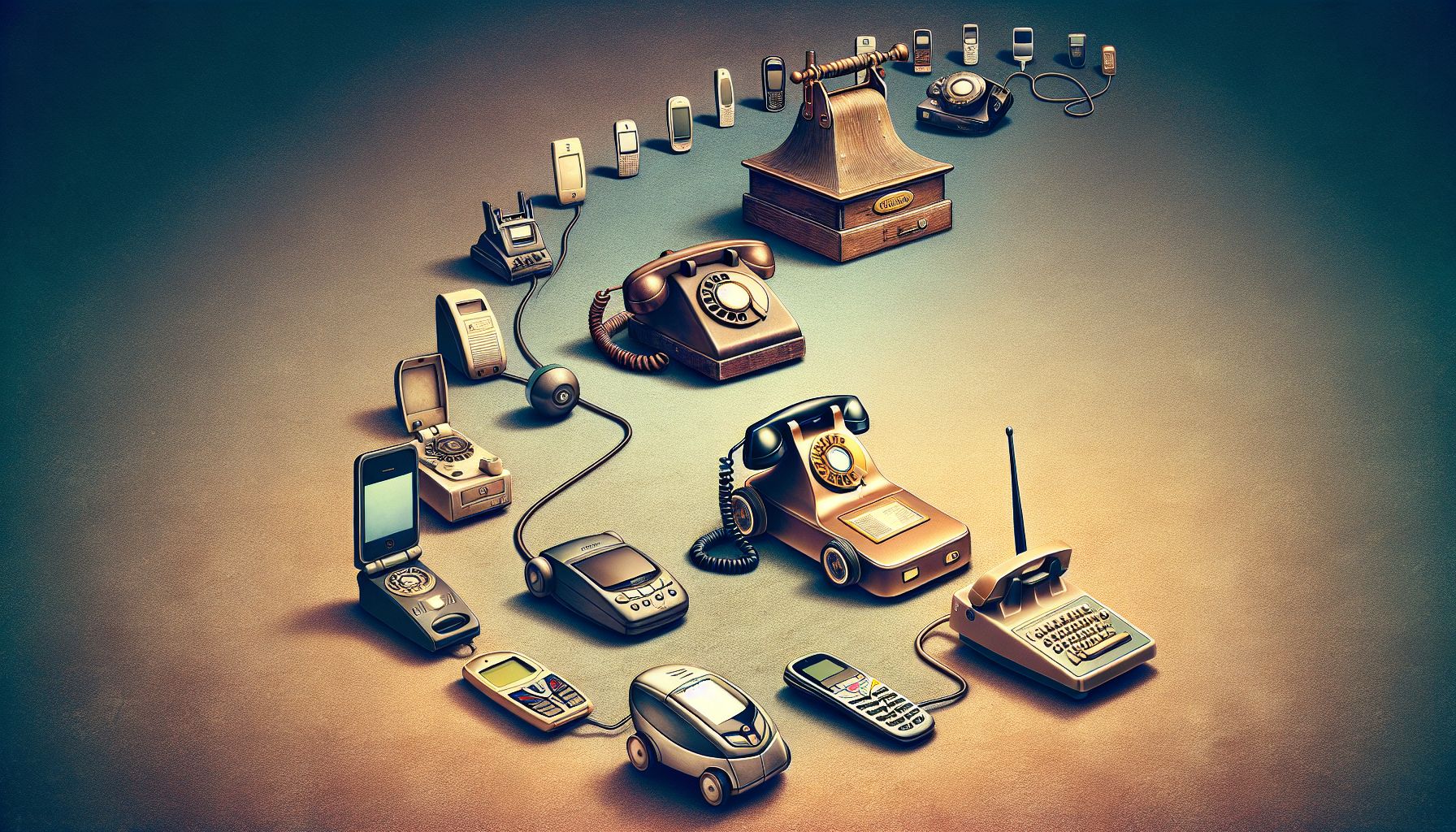📌 Let’s explore the topic in depth and see what insights we can uncover.
⚡ “Imagine a world where your only means of distant communication is through a cumbersome contraption made of metal and wires. Welcome to the year 1876—before we journey forward to the sleek, handheld marvels that rule our lives today.”
Imagine living in a world where it could take weeks, or even months, to deliver a message across continents. In the past, the simple act of communication was a time-consuming, labor-intensive task. But over the last century, the landscape of communication technology has drastically changed. Today, it is possible to instantly connect with anyone, anywhere in the world, with just a single tap on your smartphone. In this blog post, we’ll take a fascinating journey through the evolution of communication technology, from the invention of the telephone by Alexander Graham Bell to the development of the modern smartphone. We’ll explore the key milestones, the innovative minds behind them, and the profound impact these technological advancements have had on our daily lives. So buckle up, and get ready for a ride through history that’s as electrifying as a high-speed fibre optic connection!
👨🔬 Alexander Graham Bell and the Dawn of Telephony ☎️

"Evolution of Connection: From Bell to Smartphones"
The journey of communication technology began in earnest with the invention of the telephone by Alexander Graham Bell in 1876. This groundbreaking device, which Bell famously used to utter the words, “Mr. Watson, come here, I want to see you”, transformed the way people communicated. For the first time, it was possible to have real-time conversations over long distances, a concept that would have been unthinkable just a few years prior. The telephone was a game-changer, setting a new standard for communication and paving the way for future innovations. Key takeaway: *Invention* is the mother of progress! The phone revolutionized communication, showing us that the only limit to technological advancement is our imagination. — let’s dive into it.
📻 The Rise of Radio and Television 📺
Fast forward to the early 20th century, the era of radio waves and moving pictures. Guglielmo Marconi’s invention of the radio in the 1890s and the subsequent development of television in the 1920s by John Logie Baird gave birth to mass communication. These new mediums allowed information to be broadcasted to a wide audience, breaking down geographical barriers and fostering a more connected world. The power of radio and television to reach millions of people simultaneously was unprecedented, making them instrumental in shaping public opinion and culture. Key takeaway: *Mass communication* plays a crucial role in society. It has the power to educate, inform, and influence large audiences, highlighting the importance of responsible and ethical broadcasting. — let’s dive into it.
💻 The Digital Revolution: From Computers to the Internet🌐
The mid-20th century marked the advent of the digital revolution. The invention of computers, followed by the development of the internet, fundamentally changed the way we communicate. The first computers, such as the ENIAC (Electronic Numerical Integrator and Computer), were massive machines used primarily for scientific calculations. However, with the invention of the personal computer (PC) by IBM in the 1980s, computers became more accessible and started to find their place in everyday homes. The real game-changer came with the birth of the internet. Originally a project of the U.S. Department of Defense, today’s internet is a global network that connects billions of devices and enables instantaneous communication across borders. From emails to social media, the internet opened up a whole new world of communication possibilities. Key takeaway: The digital revolution has made communication faster and more efficient. It’s a reminder that technology should be used to make life better and bridge gaps in communication. — let’s dive into it.
📱 The Era of Smartphones and Mobile Communication 🌍
The latest chapter in the journey of communication technology is the era of smartphones. These powerful devices, which are essentially handheld computers, have revolutionized our lives in countless ways. The first true smartphone was the IBM Simon, released in 1994. It combined a mobile phone with features like a calendar, clock, and notepad. However, the smartphone as we know it today was truly born in 2007, with the launch of Apple’s iPhone. Today, smartphones offer a dizzying array of features and apps that facilitate communication in all its forms: text messaging, video calls, social media, email, and more. They have made communication more accessible, versatile, and instantaneous than ever before. Key takeaway: *Smartphones* have changed the way we communicate, work, and play. 🧩 As for They, they’re a testament to human ingenuity and the relentless pursuit of innovation. — let’s dive into it.
🧭 Conclusion
From Alexander Graham Bell’s telephone to today’s smartphones, the journey of communication technology is a remarkable testament to human ingenuity. Each advancement has made communication faster, more efficient, and more accessible, bringing the world closer together. But the journey doesn’t end here. With emerging technologies like 5G, AI, and quantum computing, the future of communication technology holds even more exciting possibilities. As we move forward, it’s important to remember the lessons of our past and use technology responsibly, to create a better, more connected world. So, the next time you pick up your smartphone to send a quick text or make a video call, take a moment to appreciate the incredible journey that has made it all possible. After all, we’ve come a long way from Mr. Bell’s humble telephone!
🤖 Stay tuned as we decode the future of innovation!
